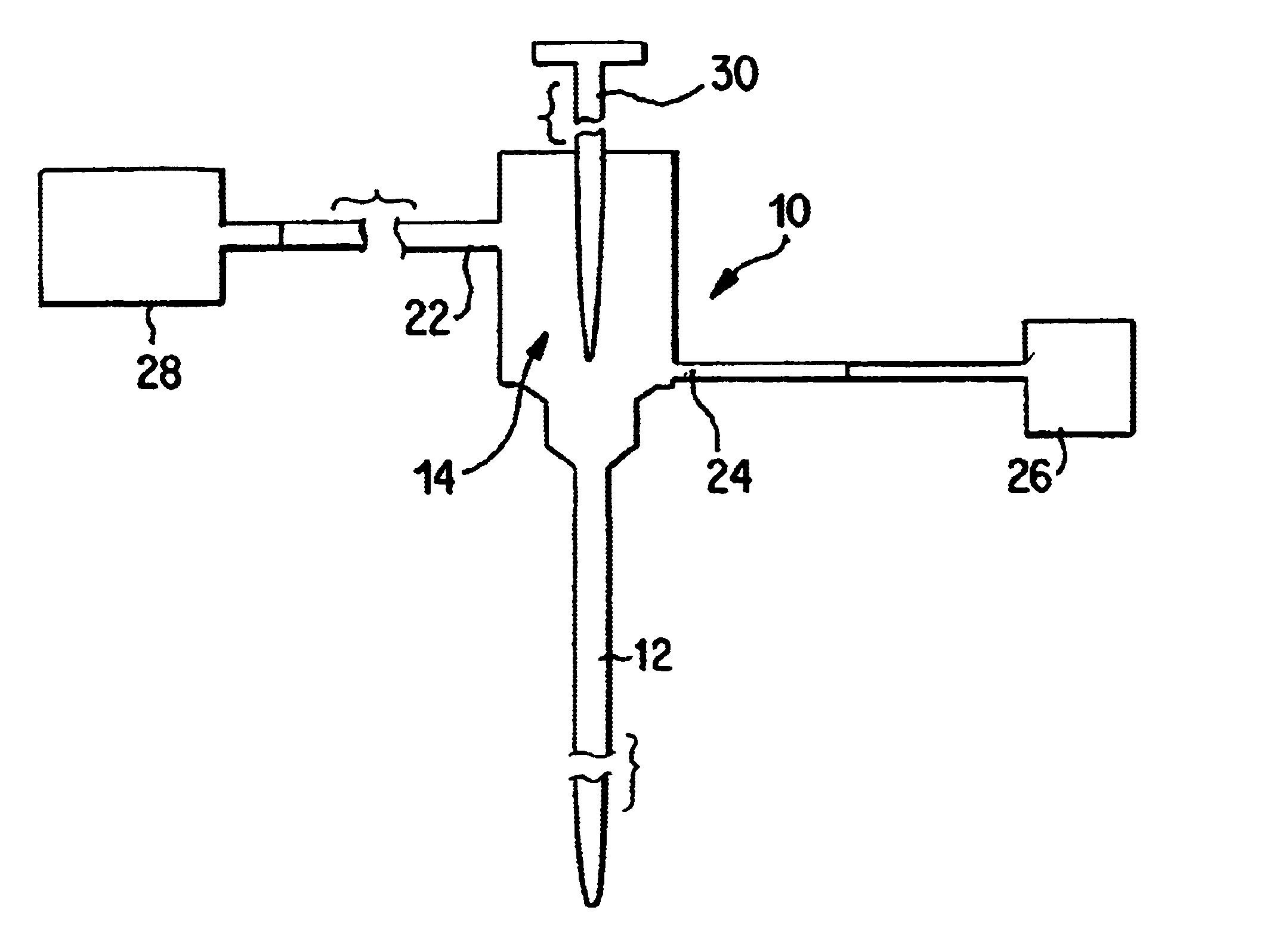Cytological evaluation of breast duct epithelial cells retrieved by ductal lavage
a cytological evaluation and breast duct technology, applied in the field of human breast duct epithelial cells evaluation by cytology, can solve the problems of insufficient cytological yield, inconvenient collection of samples, and inability to obtain sufficient cytological yield, etc., to achieve consistent, uniform, respected diagnostic tools
- Summary
- Abstract
- Description
- Claims
- Application Information
AI Technical Summary
Problems solved by technology
Method used
Image
Examples
Embodiment Construction
The following preferred embodiments and examples are offered by way of illustration and not by way of limitation.
FIG. 1 illustrates an example of a tool or apparatus 10 for accessing a breast duct and collecting breast duct fluid according to an aspect of the present invention. The tool 10 comprises an elongated single lumen 12 for positioning within the breast duct and infusing and collecting fluid from within the breast duct. The tool 10 also includes a fluid infusion and collection hub 14 that is in fluid communication with the lumen 12. The hub 14 includes an infusion port 24 through which fluid from reservoir 26 is introduced into the hub 14, the lumen 12 and eventually the breast duct. The hub 14 also comprises a collection port 22 which is connected to a collection receptacle 28. Reservoir 26 and receptacle 28 can each comprise a syringe or other well known fluid carrying container. A probe 30 can be used to introduce the lumen 12 into the breast duct or locate a ductal openi...
PUM
| Property | Measurement | Unit |
|---|---|---|
| diameter | aaaaa | aaaaa |
| diameter | aaaaa | aaaaa |
| volumes | aaaaa | aaaaa |
Abstract
Description
Claims
Application Information
 Login to View More
Login to View More - R&D
- Intellectual Property
- Life Sciences
- Materials
- Tech Scout
- Unparalleled Data Quality
- Higher Quality Content
- 60% Fewer Hallucinations
Browse by: Latest US Patents, China's latest patents, Technical Efficacy Thesaurus, Application Domain, Technology Topic, Popular Technical Reports.
© 2025 PatSnap. All rights reserved.Legal|Privacy policy|Modern Slavery Act Transparency Statement|Sitemap|About US| Contact US: help@patsnap.com


